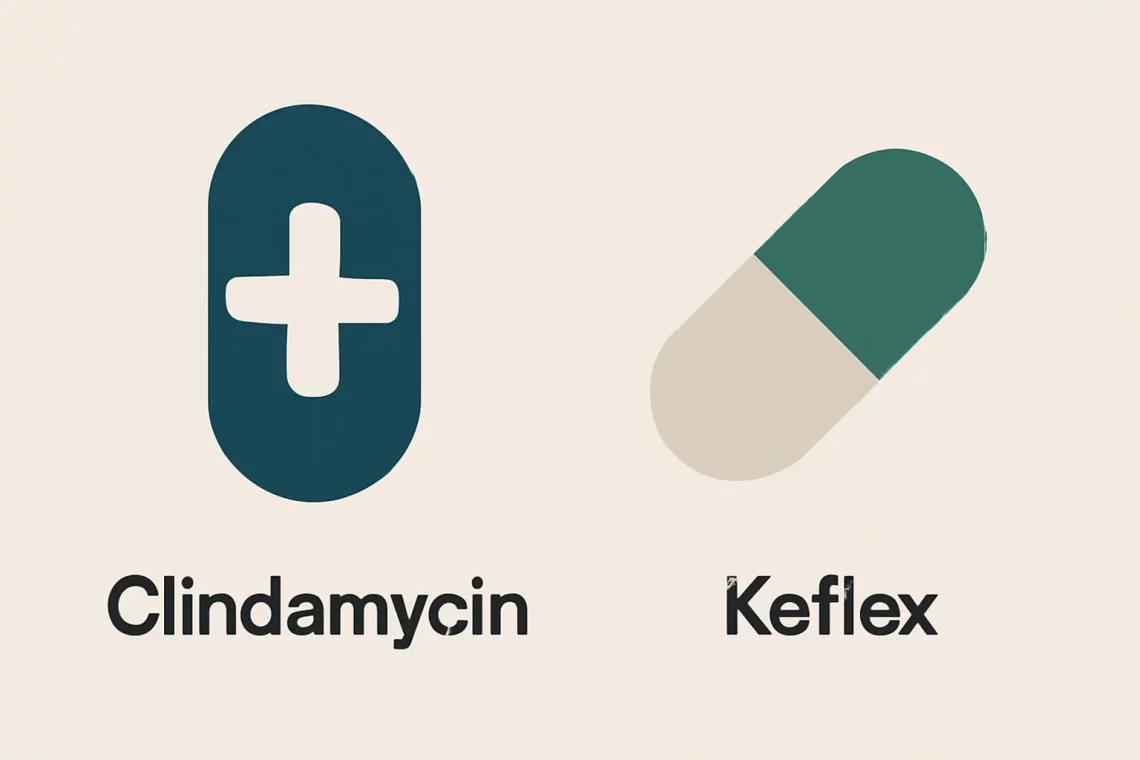-
Vraylar vs Risperdal: Understanding the Differences and Uses
Vraylar and Risperdal are two medications commonly used in the treatment of mental health disorders. They belong to a class of drugs known as atypical antipsychotics, which are designed to manage symptoms of conditions such as schizophrenia and bipolar disorder. Both medications have unique properties, efficacy profiles, and side effects, making them suitable for different patient needs. Understanding the intricacies of each medication is essential for patients, caregivers, and healthcare professionals. Vraylar, also known by its generic name cariprazine, has gained attention for its unique mechanism of action that targets specific dopamine receptors in the brain. On the other hand, Risperdal, or risperidone, has been a long-standing treatment option with…
-
Azithromycin vs Clindamycin: Key Differences and Uses Explained
Azithromycin and clindamycin are two widely used antibiotics that play a crucial role in treating various bacterial infections. Though they belong to different classes of antibiotics and have distinct mechanisms of action, both are effective in their respective applications. Understanding the differences and similarities between these two medications is essential for healthcare professionals and patients alike. This knowledge can help in selecting the right antibiotic based on the type of infection, the patient’s medical history, and potential drug interactions. Antibiotics like azithromycin and clindamycin work by inhibiting bacterial growth, but they do so in different ways. Azithromycin is a macrolide antibiotic, while clindamycin belongs to the lincosamide class. Each antibiotic…
-
Adderall vs Concerta: Which ADHD Medication is Right for You?
Adderall and Concerta are two well-known medications commonly prescribed for the treatment of Attention Deficit Hyperactivity Disorder (ADHD). Both drugs belong to a category of medications known as stimulants, which work by altering the levels of certain neurotransmitters in the brain to help improve focus, attention, and impulse control. While they share a common goal of managing ADHD symptoms, their chemical compositions, effects, and potential side effects can differ significantly. Understanding the nuances between Adderall and Concerta can be crucial for patients and caregivers navigating treatment options. The choice between these medications often depends on individual responses, lifestyle considerations, and specific symptoms. As ADHD awareness continues to grow, so does…
-
Benzonatate vs Dextromethorphan: Which Cough Suppressant is Better?
The world of cough medications is vast, encompassing a variety of options designed to alleviate symptoms associated with respiratory conditions. Among these, Benzonatate and Dextromethorphan stand out as popular choices for managing cough. Understanding the differences between these two medications is crucial for anyone seeking effective relief. Benzonatate is a non-narcotic cough suppressant that works by numbing the throat and lungs, reducing the cough reflex. On the other hand, Dextromethorphan, an ingredient found in many over-the-counter cough medications, acts on the brain’s cough center to suppress the urge to cough. Both medications have their unique benefits and potential side effects, making it essential to explore their characteristics, uses, and how…
-
Fentanyl vs Butrans: Understanding Their Differences and Uses
Fentanyl and Butrans are two powerful medications commonly used in pain management, yet they differ significantly in their composition, application, and effects on the body. As the opioid crisis continues to raise awareness around the use of narcotics, understanding the distinctions between these two substances becomes increasingly vital. Fentanyl, a synthetic opioid, is known for its potency and rapid onset of action. It is often prescribed for severe pain, particularly in cancer patients or those recovering from surgery. However, its high potential for addiction and overdose has made it a controversial choice in the realm of pain management. On the other hand, Butrans, which contains buprenorphine, is a partial opioid…
-
Naltrexone vs Vivitrol: Understanding Their Differences and Uses
Naltrexone and Vivitrol are two significant medications that play a crucial role in the treatment of substance use disorders, particularly opioid and alcohol dependence. Understanding their distinctions and applications is vital for patients, healthcare providers, and loved ones affected by addiction. Both Naltrexone and Vivitrol work by blocking the effects of opioids, thereby reducing cravings and preventing relapse. However, their mechanisms, formulations, and administration methods vary significantly. Naltrexone is an oral medication that can be prescribed for patients to take daily, while Vivitrol is a long-acting injectable formulation that is administered once a month. This difference in delivery can influence compliance and effectiveness, making it essential for individuals to understand…
-
Fentanyl vs Tapentadol: Key Differences and Comparisons Explained
Fentanyl and tapentadol are two powerful medications often used in pain management, but they differ significantly in their composition, mechanisms of action, and clinical applications. Understanding these differences is crucial for patients, healthcare providers, and anyone involved in pain management. Fentanyl is a synthetic opioid that is typically prescribed for severe pain, particularly in patients who are tolerant to other opioids. It is known for its potency and rapid onset of action, making it a go-to choice in acute pain scenarios, such as post-surgical recovery or cancer-related pain. On the other hand, tapentadol is a relatively newer medication that combines two mechanisms of action: it acts as an opioid analgesic…
-
Metformin vs Jardiance: Which Diabetes Medication is Right for You?
Metformin and Jardiance are two prominent medications commonly prescribed for the management of type 2 diabetes. As the prevalence of diabetes continues to rise globally, understanding the differences, benefits, and potential side effects of these medications is increasingly important for patients and healthcare providers alike. Metformin has long been considered the first-line treatment for type 2 diabetes, primarily due to its ability to improve insulin sensitivity and lower blood sugar levels effectively. On the other hand, Jardiance, which belongs to a newer class of diabetes medications known as SGLT2 inhibitors, has gained attention for its unique mechanism of action and additional benefits beyond blood sugar control. Both medications offer distinct…
-
Clindamycin vs Azithromycin: Which Antibiotic Is Right for You?
Clindamycin and azithromycin are two antibiotics that belong to different classes and are often prescribed to treat various bacterial infections. Both medications are effective against specific pathogens but have distinct mechanisms of action and side effect profiles. Understanding the differences between these two antibiotics is essential for both healthcare professionals and patients. Clindamycin is a lincosamide antibiotic that primarily inhibits bacterial protein synthesis, making it effective against anaerobic bacteria and certain Gram-positive organisms. It is often used for skin and soft tissue infections, as well as respiratory tract infections. Azithromycin, on the other hand, is a macrolide antibiotic that also inhibits protein synthesis but acts on a broader spectrum of…
-
Clindamycin vs Keflex: Which Antibiotic Is Right for You?
Clindamycin and Keflex are two antibiotics commonly used to treat bacterial infections. While both medications belong to different classes of antibiotics and target various types of bacteria, they play crucial roles in managing infections. Understanding the differences and similarities between these medications can help patients and healthcare providers make informed choices regarding treatment options. In recent years, antibiotic resistance has emerged as a significant public health concern, highlighting the importance of selecting the appropriate antibiotic for each specific infection. Clindamycin, a lincosamide antibiotic, is often prescribed for serious infections caused by anaerobic bacteria and certain types of streptococci and staphylococci. On the other hand, Keflex, the brand name for cephalexin,…







































